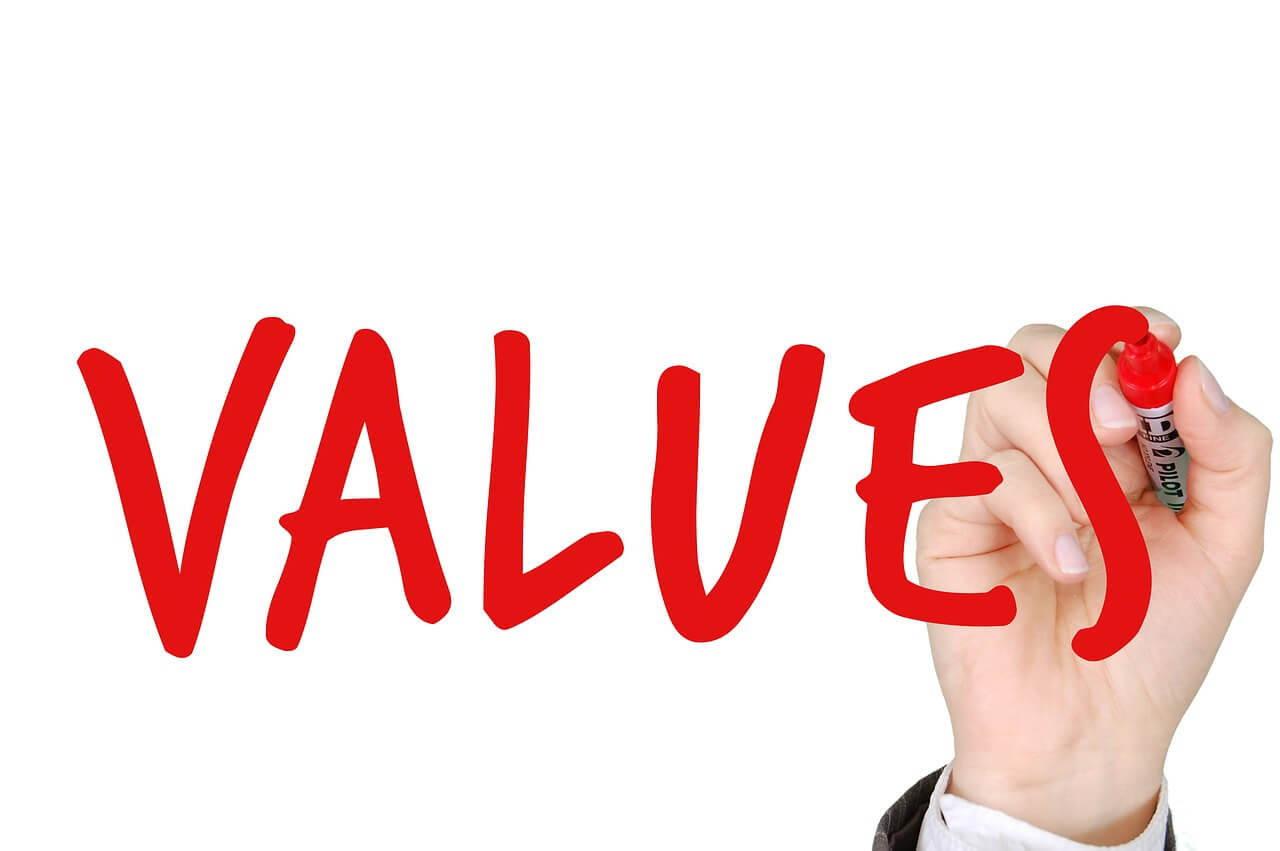The culture within an organization can immensely affect employee performance and customer satisfaction. And this is critical for companies in the IT sector. The cornerstone of a successful organization is a culture established on deeply held and widely accepted values supported by strategy and structure.
When a company has a robust and supportive culture, three things happen: Employees understand how top management expects them to react in every circumstance. Employees believe that the expected response is correct. And they are aware that exhibiting the organization’s values helps them get rewarded.
Employers play a critical role in sustaining a strong culture, beginning with recruitment and selection of applicants who share the organization’s beliefs and thrive in that culture.
What Is Organizational Culture?
The set of values, expectations, and procedures that guide and shape the behaviors of all team members is known as the culture within an organization. Consider it a collection of characteristics that define your company. An ethical organizational culture demonstrates positive attributes that contribute to increased performance. But a problematic company culture brings out aspects that may wreck even the most successful companies.
Culture should not be confused with corporate objectives or a mission statement, though both may help describe it. Culture is formed via persistent and genuine actions rather than through press releases or policy papers. When you witness how a CEO reacts to a crisis, how a team adjusts to new consumer expectations, or how management corrects an employee who makes a mistake, you may see corporate culture in action.
The Importance of Culture Within an Organization
Organizational culture influences every element of your company, from timeliness and tone to contract conditions and employee benefits. When your workplace culture is in sync with your employees’ needs, they are more likely to feel at ease, supported, and appreciated. Companies that emphasize culture are more likely to weather tough times and changes in the industry and emerge stronger.
When it comes to recruiting people and surpassing the competition, culture is a critical differentiator. As per Glassdoor’s 2019 Culture and Mission Survey, 77% of employees consider a company’s culture before applying. Almost half of the workers would quit their present job for a lower-paying position at a better-cultured company. A company’s culture is also one of the most important predictors of employee happiness and one of the primary reasons why almost two-thirds (65% ) of workers remain in their employment.
Examples of Organizational Culture Within IT Giants
Consider, for example, Microsoft and Salesforce. Both technology-based businesses are world-class performers and respected brands, thanks in part to their emphasis on culture. Renowned for its fierce competition under Steve Balmer, Microsoft has been favorably changed by Satya Nadella, who took over as CEO in 2014. He began a campaign to improve the company’s culture, a process that shifted the emphasis away from competition and toward continual learning. Employees were urged to better themselves rather than prove themselves.
Today, Microsoft’s market value is approaching $1 trillion. And it is once again vying with Apple and Amazon as one of the world’s most valuable businesses.
Salesforce prioritizes company culture and has seen tremendous development over its lifetime. Salesforce’s founder and CEO, Marc Benioff, created philanthropic and cultural standards that have governed business for the last two decades. All new Salesforce employees volunteer on their first day and earn 56 hours of compensated volunteer time each year.
How and Why Does Culture Within an Organization Change?
Here’s one crucial factor that you must focus on when developing a sound organizational culture. It does not remain unchanged. Members of an organization acquire a universal idea about “what proper looks like” as they engage and discover what works and what doesn’t over time. When such ideas and assumptions result in less-than-satisfactory outcomes, the culture must change for the company to keep up with the changing environment.
Shaping organizational culture is a difficult task. Employees often resist change and may band together to oppose a new culture. So, leaders must persuade their workers of the advantages of change. In addition, leaders must demonstrate to employees, via shared wisdom and new behaviors, that the new culture is the best way to succeed. The Organization Development & Change 9th Edition by Thomas G. Cummings and Christopher G. Worley explains these theories in detail.
The Characteristics of a Great Organizational Culture
Every organization’s culture is unique, and it’s critical to preserve what makes your business stand out. But the cultures of high-performing companies typically reflect the following characteristics, which you should strive to cultivate:
1. Alignment occurs when the company’s goals and the incentives of its workers all pull in the same direction. Exceptional companies strive to ensure that their vision, purpose, and objectives are always in sync.
2. Appreciation may take various forms, including public praise, a thank-you letter, or a promotion. A culture of gratitude is one in which all team members regularly recognize and appreciate others for their efforts.
3. An organization cannot function without trust. When there is a trusting culture, team members may express themselves and depend on others to support them when they attempt something new.
4. Performance is critical because successful businesses foster a business-oriented culture. Talented workers in these businesses encourage one another to succeed. And the consequences, as seen above, are increased profitability and productivity.
5. Teamwork entails cooperation, communication, and mutual respect among team members. Your staff will be more productive and happier if everyone on the team supports one another.

6. Organizations that innovate make the most use of existing technology, resources, and marketplaces. A culture of innovation entails applying creative thinking to all areas of your company, including your own cultural efforts.
7. Psychological safety gives workers the confidence they need to take risks and offer honest feedback. Keep in mind that psychological safety begins at the team level, not the individual level. So, managers must take the lead in establishing a secure environment in which everyone feels comfortable participating.
Steps to Creating a High-Performing Organizational Culture in Your IT Company
1. Perform admirably in recognition
Recognizing all team members’ efforts has a far-reaching, beneficial impact on company culture. When everyone on the team acknowledges the achievements of others, members begin to understand how they fit into the bigger picture.
Even the most disillusioned workers want to know that their job is relevant. And they realize that when they aren’t acknowledged, 76 percent of workers don’t feel recognized by bosses. Experts believe that when a company values its workers as a component of its culture, key indicators such as employee engagement, loyalty, and productivity increase.
2. Allow employees to express themselves
Creating a culture within an organization that appreciates employee input and promotes employee voice is essential. Failure to do so may result in lost income and demotivated workers.
First, you must gather feedback using the appropriate listening technologies, such as pulse surveys and workplace chatbots, that allow workers to communicate how they are feeling in the present comfortably. Then, evaluate the data to determine what is and isn’t working in your company and act on those discoveries while still relevant.
3. Make your leaders cultural ambassadors
The success of your business in developing healthy workplace culture is in the hands of managers and supervisors. For example, if your company culture emphasizes particular principles but your leadership team does not embody them — or even exhibits behaviors that contradict them — the effort is undermined.
Members of the team will see the mismatch between professed ideals and actual actions. They may even begin to imitate immoral actions because they think management has rewarded them for doing so.
4. Adhere to your company’s values
The values of your business form the basis of its culture. Developing a mission statement is a great place to start. And living by corporate values entails incorporating them into every area of your organization. And this covers terms of support, HR rules, welfare programs, and even out-of-office activities like volunteerism.
Your workers, partners, and clients will notice and appreciate the fact that your company lives its principles every day.

5. Help team members connect
Building a resilient workplace culture necessitates strong ties between teammates. But with more distant and terse communication, forming such bonds may be difficult. Encouraging cooperation and participating in team-building events are two excellent ways to bring your team together and improve communication, even if you work overseas.
6. Make the employee experience more personalized
Because your workers, like contemporary customers, demand customized experiences, you must concentrate on methods to enable each team member to connect with your culture. Pulse surveys and worker journey mapping are excellent tools for determining your workers’ values and what their ideal company culture looks like.
Treinetic’s Culture as an Award-Winning Company
Treinetic understands that organizational culture develops even without your involvement. But in the lack of such direction, it may not be wholesome or productive. So, while creating our workplace culture, we keep three prime elements in mind: communication, recognition, and action. And this appealing work culture assists us in providing world-class services to both local and international customers.
You, too, can enhance employee communication by following the steps covered in this article. You may also begin to foster a culture of recognition and guarantee that all teammates put your culture into practice.

